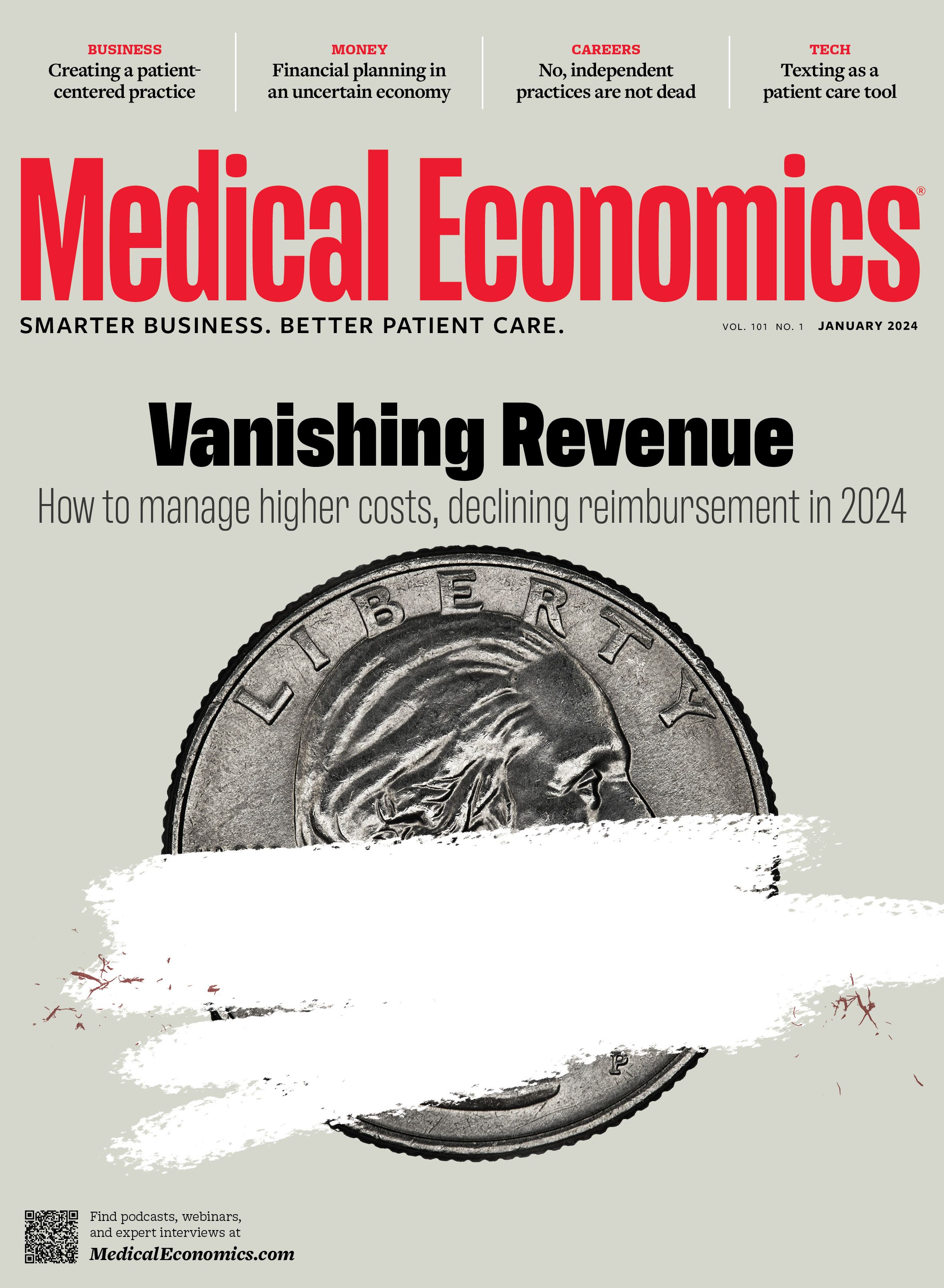News
Article
Medical Economics Journal
Creating a patient-centered practice: Strategies for improving patient satisfaction & retention
Author(s):
Streamlining operations allows physicians to spend their time caring for patients, and for patients to feel cared for
How to improve patient satisfaction: ©Goodluz - stock.adobe.com

The new year 2024 will bring new advances in fields that can benefit physician practices, including artificial intelligence, telemedicine, electronic health records, imaging, testing, surgical techniques and pharmaceuticals. If patients need those, they will also want a physician to guide them through illness to health and wellness.
This year during examinations, the doctor-patient conversation will remain the centerpiece of medicine.
“It’s an opportunity for the provider to do a temperature check in terms of whether that patient really understands what’s happening and gauge where they’re at from a choice perspective and what additional information they need to have,” said Dawn Plested, MBA, J.D., a Minnesota-based consultant. “It’s just a human thing, when you just want to be heard in moments that will affect your health care. When your health is at risk, it feels like it’s life or death. It sometimes is life or death.”
But beyond the patient visit, there are things physicians can do before and after the appointment to keep the patient engaged and their relationship with the physician and the practice strong. This article details the latest practice and patient management tips to ensure patients are engaged before, during and after their visit.
Before the visit
Online information
Many patients get their first impression of a physician online. Whether good or bad, fair or unfair, physicians must be aware of their practice’s cyber image and its effects on attracting new patients and recruiting new workers. That means someone has to monitor websites such as Google, Yelp, Facebook and LinkedIn, said Adrienne Lloyd, MHA, FACHE, a consultant who has worked for Mayo Clinic and Duke Health System.
Basic information online, such as telephone numbers, addresses and open hours, must be accurate. A website or social media page can be fun, too, providing a place to brag about presenting at conferences or simply having a good day at the office.
Cyber scheduling
Find a way to allow patients to schedule appointments online. For years, people have been able to book airline tickets online around the world. “Why not be able to do the same with your doctor?” said D.J. Kennedy, M.D., FAAPMR, a physician and professor and chair of physical medicine and rehabilitation at Vanderbilt University Medical Center in Nashville, Tennessee.
Patients like online scheduling because it allows more flexibility when selecting a physician or appointment time. Meanwhile, staff spend less time on scheduling and focus more on patient needs. In turn, this results in better care, which is what patients and providers want, Kennedy explained.
Prepare ahead of time
Move as much check-in paperwork off-site ahead of patient visits. It may involve some office coordination, such as a phone call with a nurse, pharmacy technician or medical assistant to get a patient’s medication list, Lloyd said. However, doing so allows patients to get in and out more quickly, while the time in between is dedicated to the physician-patient visit.
“As you think about the whole process and the workflows, what can be done off-site? What doesn’t even need to be done? What can be done in a more efficient way?” Lloyd said.
Setting goals
On the intake questionnaires, have your patients write down their goals for the visit.
“Our primary care groups have used this with a lot of success, so now it’s moving into some of the subspecialty work,” said Scott R. Laker, M.D., FAAPMR, senior medical director of CU Medicine at the University of Colorado. “As your provider, [we will know] what the three things [are that] you want to get out of today’s visit. That allows me to answer your questions and gives me some breathing room to know whether I’m going to have enough time to answer or ask some of the questions I need to get through.”
During the visit
The patient arrives
If the day’s appointments are not running on time, be sure to let the patients know. When patient satisfaction scores were bad for wait times at Stony Brook Primary Care in New York, staff created a waiting room sign board, said medical director Susan Y. Lee, M.D., FACP. The team would love to have an automated check-in system, an electronic message board and text updates to patients. Until then, they use a whiteboard printed with the physicians’ names and color-coded magnets to indicate timeliness: green is on time, yellow is 15 minutes behind and red is 30 minutes behind.
“It’s our little rudimentary message board, but it works. We don’t have any technical issues with magnets,” Lee said.
Have staff to help
That practice’s Patient Family Advisory Council agreed with a patient suggestion to create a waiting room concierge. Support staff rotate to a desk in the waiting room to check in and talk to patients. “Health systems should consider having a service like this, because I do feel that patients deserve this concierge service,” Lee said. “It’s very stressful to go to a doctor, and the waiting room is really a place of anxiety. I do feel that this helps.”
She also noted that those methods did not require spending thousands of dollars on new technology or consultants.
“Hi, my name is …”
Keep employee identification badges, but when patients arrive, consider having staff identify themselves by first name and explaining how they are assisting in each step in the appointment. “As someone is checking in, [say], ‘Hi, I’m Katie, and I’m going to be handling your paperwork today. I just have a few questions for you,’” said Katie Lawrence, MHA, CMPE, principal consultant for Willow Strategy Group.
Some practices use paper cards or a list of staff and tasks in patient portals. Those methods help patients know they are interacting with people who know and can explain each step of the process of a medical visit.
Face-to-face
When the patient is ready, take time to review the medical record— even if very briefly — before entering the exam room. “Know why the patient is there today, because it may be different than why they were there the last time,” Lawrence said.
If the patient got test results back or had an appointment with a specialist, acknowledge that. “It’s about being intentional, showing the patient that they are the focus of the visit, not just another number on an assembly line,” she said.
“How can I help you?”
“I start every visit [by asking], ‘How can I help you today?’” Kennedy said. He noted that this does not mean the physician must defer to the patient’s every wish for a test, procedure or prescription. However, patient answers will often indicate issues that physicians need to address.
Seeing eye to eye
Eye contact is important, so put the computer to the side and get eye level with the patient, Lawrence said. Don’t just look straight into the screen without acknowledging the patient. “It’s about who you put first and second,” Lawrence said.
Talk the talk
Speak in terms that patients will understand. Physicians, other clinicians and support staff often speak their own language of terms, abbreviations and acronyms that patients aren’t familiar with, Lawrence explained.
For example, a word that sounds like “cabbage” could be used to remind patients to eat their leafy greens, or it could mean to get ready for a coronary artery bypass graft surgery, or CABG. “It’s not to dumb it down, because it’s not that our patients are unintelligent. They just don’t speak the same words,” Lawrence said.
Learning and teaching
Ask patients to teach back what they just learned. Patients may feel they understand your explanation, instructions or guidance, but they don’t have it when they walk out. This goes beyond simply asking patients whether they have any questions.
When they talk, the patient’s phrasing probably will be different, “but by helping engage the patient in their own learning, they’re going to absorb it better and have a better experience overall,” Lawrence said.
Complete your work in real time
Completing work in real time could involve asking the patient whether they mind if you dictate visit notes in front of them, said James Deming, M.D. He integrated that into his practice where he could as a small-town family physician.
“That did several things,” he said. “It allowed them to hear what I said. It allowed them to correct me — ‘Doc, that’s my left shoulder, not my right.’ Or, ‘It was three weeks, not three months.’ It lets them know that I think their knowledge of what I’m documenting is important, and it significantly reduces the cognitive load that I have to carry around with me.” But he warned that this is usually not possible by the physician “just trying harder.” The whole office system must support this by offloading other tasks that do not require physician input.
After the visit
Ask for feedback
Whether on paper or online, practices need to ask patients what they could do better. “I would highly recommend everybody be doing a patient survey,” Lloyd said. “Even asking three to five questions: How do you think your visit went? How would you rate us on a scale of 1 to 10? Is there anything we could have done today that would have made your experience better?”
The survey may prompt complaints, but it is better to address those in person on the day of the visit instead of trying to counteract a negative online review that goes public, she said.
Going back online
Remember the importance of online reviews? If patients are complimentary, hand them a card and ask whether they would post a positive write-up.
“If you have a patient at your front desk who’s kind of yelling at you, you might not hand them that card,” Lloyd said. “That would be one you try to pull into the office and have a conversation with before they leave.”
Keep it simple
Prescriptions and treatment plans are complicated, but communicating them to patients does not have to be. At Stony Brook Primary Care, a group of physicians, led by Archana Radhakrishnan, M.D., wanted to improve patient care through better understanding of discharge instructions.
They used Press Ganey patient survey results from October to December 2022 for baseline data, then created one-page sheets to fill out and give to patients from January to March this year. There are slots for patients to note who they saw for their visit, any changes made during the visit or homework before next visit, the dates of and reasons for follow-up visits, as well as additional notes.
This resulted in better patient evaluation scores, through Press Ganey, for two attending physicians who oversaw residents there. “Through simple homework-style discharge checklists, patients and providers can work together during a visit to improve communication and eventually patient satisfaction,” the doctors said in a poster presentation for the New York Chapter of the American College of Physicians.
The new and the old
The business of primary care is more competitive than ever, and patients want care that is both quality and convenient. Following these tips can help practices keep their competitive edge and keep patients coming back for more care. In 2024, the best physicians will look for new ways to reengage their patients and relearn some old methods, too.






